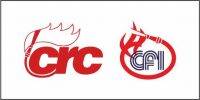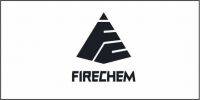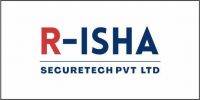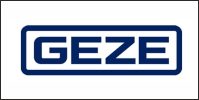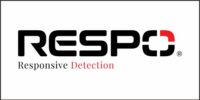Protect what is behind that rack using the rack
![]() We all know how expanded internet connectivity, combined with easy accessibility has led to the need for data across industries. This need has compelled organizations to replace traditional physical processes with digital online formats to survive the competition. Another reason for this shift to modern data processing was the pandemic-induced lockdown. A report by CRISIL pointed out that India’s data consumption alone has seen a sharp 38% rise year-on-year for FY2021 on account of the pandemic. To sustain this data storage and processing regularly in every situation, the demand for internet bandwidth has increased.
We all know how expanded internet connectivity, combined with easy accessibility has led to the need for data across industries. This need has compelled organizations to replace traditional physical processes with digital online formats to survive the competition. Another reason for this shift to modern data processing was the pandemic-induced lockdown. A report by CRISIL pointed out that India’s data consumption alone has seen a sharp 38% rise year-on-year for FY2021 on account of the pandemic. To sustain this data storage and processing regularly in every situation, the demand for internet bandwidth has increased.
In India, the data center market is witnessing an accelerated expansion due to a massive boost in virtualization and cloud-based technologies. As per the Synergy Research Group, the data center market is expected to witness a CAGR of 12% between 2019 and 2024.
Localization of Consumer Data
The Data Protection Act implemented by the Government of India focuses on the “Digital India” initiatives which emphasize the importance of being self-reliant or “Atmanirbhar” on the technological front. This self-reliance is a result of the need for data centers within the geographical boundaries of India. The Data Protection Bill is also a contributing factor to the need for data centers that aim to protect and secure digital sovereignty. These growing demands for data centers have opened opportunities for global investors.
Inadequate Security at Data Centers
Data centers house computing and networking devices that store, process, analyze, and distribute large volumes of data. Organizations usually opt for on-premises data center provisions or partner with third-party organizations known as co-location which rent out their networking equipment and space.
In both cases, organizations face similar issues concerning the security of the stored data. These issues can be classified into two categories – Software security and physical security. While software security involved protection against technological breaches like malware prevention and firewall management, the physical aspect focused on asset security like employee, hardware, access authentication, and data center equipment protection.
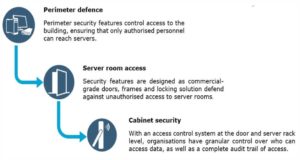 With these measures, organizations can ensure the security of data servers on the outer layers of the center. However, this did not guarantee 100% security at the innermost layers. For example, a malicious employee with authorized access to outer layers can easily breach and tamper with a server. This type of threat can make the entire outer security layer irrelevant.
With these measures, organizations can ensure the security of data servers on the outer layers of the center. However, this did not guarantee 100% security at the innermost layers. For example, a malicious employee with authorized access to outer layers can easily breach and tamper with a server. This type of threat can make the entire outer security layer irrelevant.
Over the years, data centers have used mechanical locks to secure individual racks and prevent intruder attacks. But at the same time, data has also become a more sensitive target for theft. To safeguard such sensitive data, mechanical locks alone are not sufficient. Tampering using basic tools, duplication of mechanical keys, and other break-in methods are common practices used for server data theft.
This is where the need for additional security at the rack cabinets arises. To halt both insider and external threats, it is imperative to highlight the severity of server rack security. Developments in technology demand the highest level of security sophistication. While many spaces need security, the regulated environment of data centers requires a particularly specialized means of access control.
Secure your Server Rack with Aperio® Wireless Locking Technology
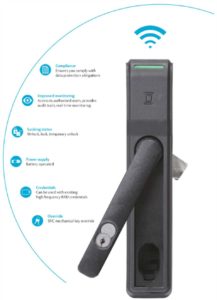 However, entry-level staff does not necessarily understand the criticality of data protection. Also, security systems such as PIN pads & card readers are now being installed on server enclosures, but these come with their own set of problems. One of them is the limited functionality of locking and sensing door position. Installation of such systems is possible only at new premises as they cannot be retrofitted to existing data centers or enclosures. This not only spikes up installation costs but also requires additional investment in reworking the infrastructure.
However, entry-level staff does not necessarily understand the criticality of data protection. Also, security systems such as PIN pads & card readers are now being installed on server enclosures, but these come with their own set of problems. One of them is the limited functionality of locking and sensing door position. Installation of such systems is possible only at new premises as they cannot be retrofitted to existing data centers or enclosures. This not only spikes up installation costs but also requires additional investment in reworking the infrastructure.
Aperio KS200 wireless server rack lock is the perfect solution to these problems which can be accessed seamlessly through Aperio wireless locking solution.
Aperio, a solution under the ASSA ABLOY group, is a technology developed to address modern threats with hassle-free installation. This new wireless advanced solution complements new and existing electronic access control systems. It upgrades the controllability and security level at all premises. All changes can be implemented in real-time using the access control software and communication hubs without visiting every cabinet with a portable updater.
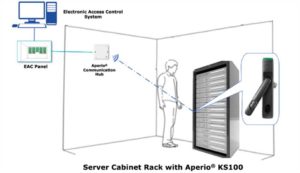 The Aperio devices can be installed in all type of doors; glass, wooden or metal, and even server racks. Once installed, Aperio locks integrate with your Electronic Control Access System and communicate wirelessly through an Aperio Communication Hub. With online integration, you can present any of your smart credentials to the lock. The access decisions are then communicated and recorded by the system wirelessly. The ROI of this deployment is future-proof as Aperio supports industry-leading RFID technologies and in the case of KS200, it includes varied monitoring options such as door and lock status, handle status monitoring and tamper monitoring.
The Aperio devices can be installed in all type of doors; glass, wooden or metal, and even server racks. Once installed, Aperio locks integrate with your Electronic Control Access System and communicate wirelessly through an Aperio Communication Hub. With online integration, you can present any of your smart credentials to the lock. The access decisions are then communicated and recorded by the system wirelessly. The ROI of this deployment is future-proof as Aperio supports industry-leading RFID technologies and in the case of KS200, it includes varied monitoring options such as door and lock status, handle status monitoring and tamper monitoring.
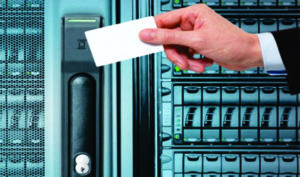 Aperio Server Rack Lock empowers you to control physical access to your servers enabling businesses to meet data protection and privacy compliance. With all communication happening wirelessly, the security manager has complete, state-of-the-art control over access points.
Aperio Server Rack Lock empowers you to control physical access to your servers enabling businesses to meet data protection and privacy compliance. With all communication happening wirelessly, the security manager has complete, state-of-the-art control over access points.
For more information please contact:
ASSA ABLOY Opening Solutions
www.assaabloy.com










